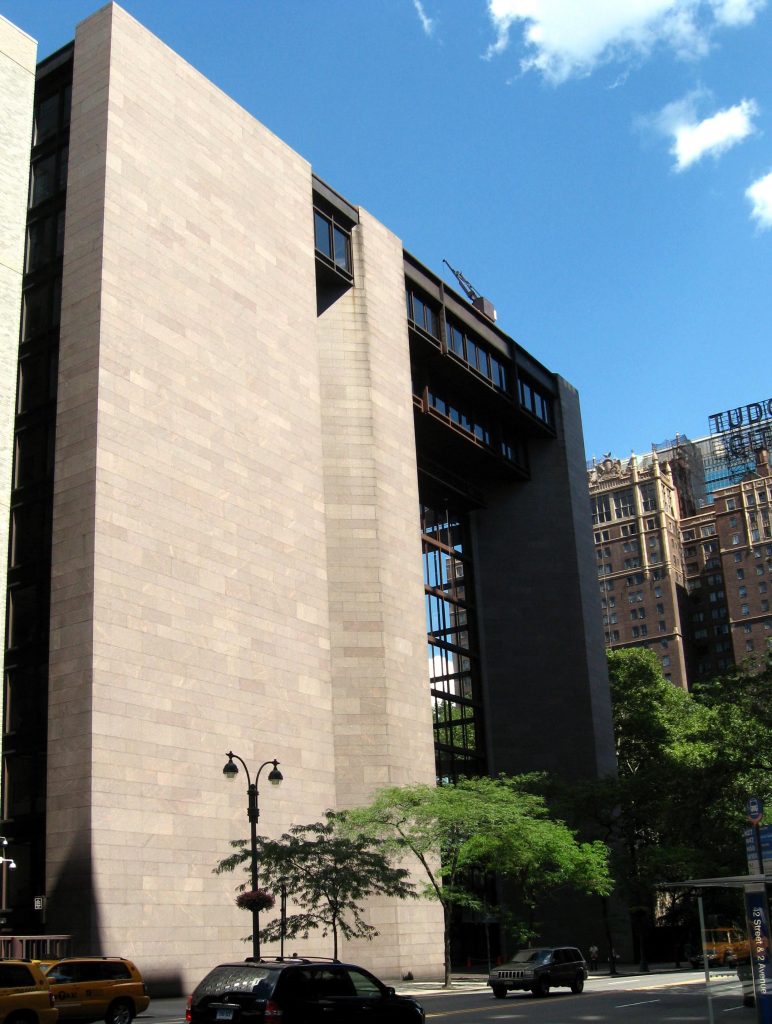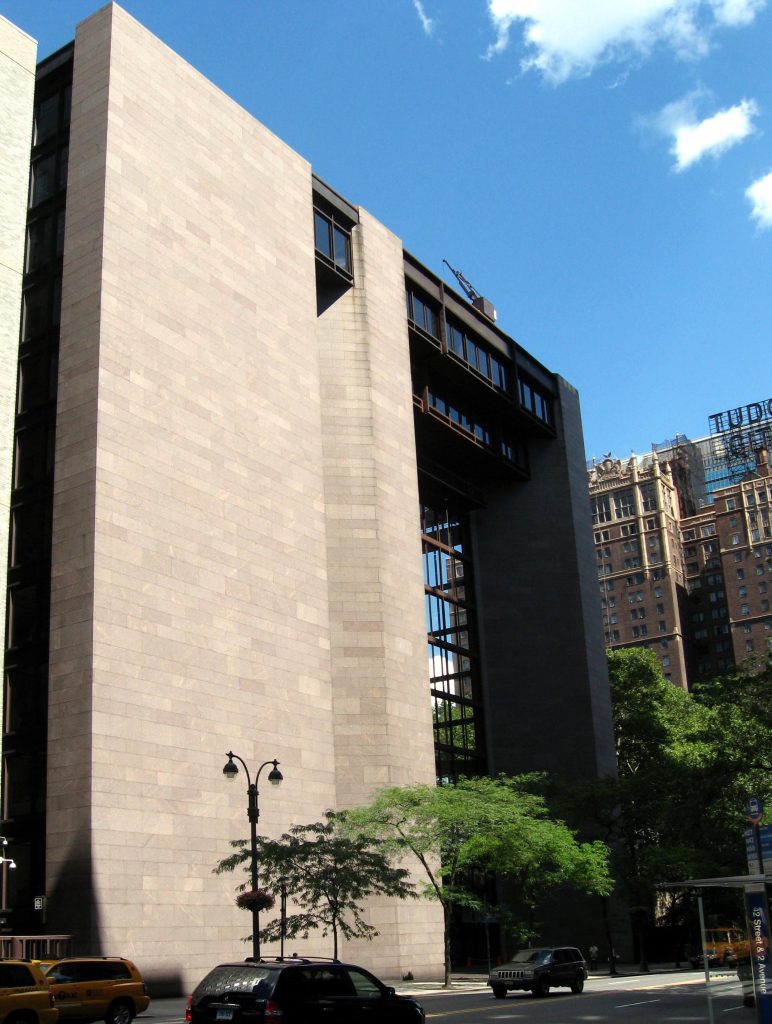The Ford Foundation was, for much of its history, the largest foundation in the United States, though it has been passed in recent years. As of December 2014, it possessed assets of $12.5 billion.4
The Ford Foundation was created to preserve family control of Ford Motor. The car company’s shares were divided into two classes: non-voting Class A stock, which amounted to 95 percent of all stock, and voting Class B stock, which accounted for the remaining five percent. The Class A stock would be willed to the Ford Foundation, while the Class B stock would be retained by the Ford family to ensure family control of Ford Motor Company.
The foundation stayed small until after Henry Ford’s death in 1947, after which, by the term of Ford’s will, the foundation was endowed with hundreds of millions in Ford stock.
Henry Ford, according to historian William Greenleaf, donated $37.6 million to charity during his lifetime, with his favorite causes being Greenfield Village and the Henry Ford Museum in Dearborn, Michigan and the Henry Ford Hospital (now the Henry Ford Health System) in Detroit.5 But in 1948, while Henry Ford’s will was still in probate, his grandson Henry Ford II signed a document stating that the Ford family would exercise no more influence on the foundation than any other board member would. In 1952 Henry Ford II told the Cox Committee, a House committee investigating foundations, that this decision was made because “this trust was so large that our family should not have control of it.”6
Henry Ford II regretted this decision for the rest of his life. He was chairman of the board of the Ford Foundation from 1948-1956, and a trustee until 1977, when he resigned over the foundation’s anti-capitalist drift. “In effect, the foundation is a creature of capitalism,” Ford wrote in his resignation letter, “a statement that, I’m sure, would be shocking to many professional staff people in the field of philanthropy . . . I’m just suggesting to the trustees and the staff that the system that makes the foundation possible is very much worth preserving.”7
The Ford Foundation, freed from any restrictions on how its vast wealth should be spent, has gone through several phases in its spending. In 1956, after sales of Ford Motor stock added $550 million to its endowment, the foundation awarded $198 million to private hospitals, $90 million to private medical schools, and $260 million to private liberal arts colleges to raise faculty salaries. “The purpose of the huge giveaway was unabashedly political,” note historians Leonard Silk and Mark Silk. “The hospital grants were deliberately arranged so that there would be some Ford money flowing into every Congressional district.”8
Activism and the Bundy Era
The Ford Foundation became more activist beginning in the late 1950s. The trend accelerated during the tenure of former Kennedy and Johnson administration National Security Advisor McGeorge Bundy, who served as Ford Foundation president between 1966 and 1979.
The Gray Areas Program (1959-1965)
Seeking to reduce poverty in what Ford Foundation program officer and future Johnson administration official Paul Ylvisaker called the “gray area” between central business district and suburb, the Ford Foundation funded inner city poverty-fighting programs from 1960 onwards. A review of Gray Areas programs by Peter Marria and Martin Rein commissioned by Ford and published in 1973 found that most were modestly successful, although Ford’s programs in Philadelphia never got off the ground and the ones in New York directly subsidized militancy against landlords and other businesses.9 The program’s lasting result, however, was in inspiring the Johnson administration’s War On Poverty, with Ford Foundation program officers frequently consulting with Johnson administration planners on programs that could be devised.10 In Maximum Feasible Misunderstanding, the late U.S. Senator Daniel Patrick Moynihan (D-N.Y.) credits the Gray Areas program with being the intellectual inspiration for the Job Corps, Head Start, and Volunteers in Service to America (now part of AmeriCorps).11
Population Control
Ford frequently collaborated with the Rockefeller Foundation, both in funding population-control programs and in lobbying for more money on population control after these programs were taken over by national and international agencies from 1965 onwards. The best estimates are that Ford spent $150 million on birth control programs between 1958-1983, with funding peaking at $25 million in 1969.12
Legal Education
Ford money created the “public interest” law movement, with tens of millions going to organizations supporting minorities (such as the Mexican American Legal Defense and Education Fund or MALDEF) as well as environmental legal groups such as the Environmental Defense Fund and Earthjustice. Cato Institute fellow Walter Olson refers to Ford as “the Johnny Appleseed of litigation liberalism” and notes that funding activist lawyers has been a key theme of Ford’s grantmaking for decades.13
For over half a century, the Ford Foundation has operated behind the scenes to flip American law schools into operatives of 1960s-style “social change.” Other large organizations like Carnegie, Open Society, and MacArthur have followed the Ford Foundation’s path, and the result can be seen in landmark Supreme Court decisions, the abundance of politicized “legal clinics” across college universities, and the courts’ growing willingness to defer to “international law.”16 encouraged the Ocean Hill-Brownsville school district in New York City and two other districts to implement “community control,” where parents in the district were given more power over local schools. Unfortunately, the mostly African-American parents in Ocean Hill-Brownsville wanted the power to fire members of the United Federation of Teachers, who were mostly white. Every time the parents’ council tried to “fire” teachers, the teachers struck, the third time for five weeks. Ultimately, in November 1968, Mayor John Lindsay (R, later D) abolished the parental councils. But the result was that UFT president Albert Shanker, who became president of the American Federation of Teachers, was an implacable foe of school choice for the next 30 years.17
After the Patman Committee
The “community control” debacle and other political excesses led to an investigation of Ford and other foundations by an investigative committee of the House of Representatives in February 1969 led by Rep. Wright Patman (D-Texas). The Senate (but not the House) passed a bill calling for an elimination of most of the ability of foundations to fund political activity as well as a 40-year term limit on foundations. Washington Post reporters Laurence Stern and Richard Harwood noted that under the Senate’s proposal, “perhaps 70 percent of Ford’s present activities in the field of ‘national affairs’ and ‘social development’ would be outlawed, leaving the foundation little to do with its wealth but hand it out to symphony orchestras, Community Chests, and Ivy League colleges.”18
The Tax Reform Act of 1969 ultimately imposed a payout requirement on foundations and some restrictions on foundation support of political activity. Responding to the changes, the Ford Foundation shifted from funding large-scale welfare reform programs to smaller ones. It was a leading advocate of “individual development accounts,” which encourage low-income households to save by matching funds saved by families below a given income threshold. Ford intended to use this program as a pilot scheme for a universal, government-funded child allowance.20
Internationally, the Ford Foundation’s largest effort at the turn of the century was the International Fellowships Program, which received $420 million in Ford Foundation money between 2001 and 2013, when it ceased operations.
Ford also supported the World Conference Against Racism, providing grants for several organizations to attend this conference. The conference, held in Durban, South Africa in August and September 2001, is best known for a debate over a clause that equated Zionism with racism.24
Activities since 2000’s
In December 2024, the Washington Examiner released a story about an October 2024 report from government agency Government Accountability Office (GAO) which alleged that between 2013 and 2021 the People’s Republic of China (PRC) spent roughly $679 billion in up to 165 countries due to a “global infrastructure initiative” that would allow it to “leverage debt against developing countries to extract political concessions and given the Chinese Communist Party a massive global telecommunications foothold.” 25 A separate story by the Washington Examiner also alleged that the Ford Foundation, between 2020 and 2023, has spent over $10 million in grants towards PRC and Chinese Communist Party (CCP)-affiliated entities in the development of said global initiative. A spokesperson for the Ford Foundation claimed such grants paid were meant to help the Ford Foundation “ensure that China’s impacts in the world are equitable…[and] help advance this aim by supporting research and knowledge sharing that promote equitable and sustainable investment and development finance practices.” 25 One donation of $150,000 grant in 2020 was to the Beijing Normal University for its “Belt and Road School, ” a local initiative that the GAO’s 2024 report alleged was meant to increase “the foreign presence of Chinese state firms, create new markets for PRC goods, and secure access to strategic commodities for the PRC’s economic development. The BRI is considered by some observers to pose a significant challenge to U.S. economic, political and security interests around the world.” 25
New Leadership and Expansion
Ubinas’s successor, Darren Walker, came to Ford as its tenth president in 2013 with a very clear vision of what he wanted the Ford Foundation to become. Walker’s resume includes time as a trader at UBS, a program office and president of the Abyssinian Development Corporation, which promotes development in Harlem; a program officer at the Rockefeller Foundation; and a Ford Foundation vice president.27
Hudson Institute fellow William Schambra warned in a 2014 Chronicle of Philanthropy opinion piece that the deal could set a dangerous precedent. “Some of America’s leading foundations are now deeply engaged in Detroit politics, ‘giving’ and ‘taking’ like any municipal power broker,” Schambra wrote, “meeting requests they never before would have considered, and making demands they never would have dared. Although they deny they are setting precedents, they clearly are. They may live to regret them.”30
As part of this refocus, the Ford Foundation announced in 2016 that it would lead a six-year effort to raise $100 million for the Movement for Black Lives, an organization designed to receive grants for groups involved in the Black Lives Matter movement. Allies of the Ford Foundation in this effort are the foundations associated with liberal billionaire George Soros, the NoVo Foundation, and the Hill-Snowden Foundation.32
Funding Protests
The foundation has funded organizations closely associated with violent activists, such as the Southern Vision Alliance, which has ties to Charlotte Uprising, a group that led protests at the 2020 Republican National Convention where police officers were assaulted. 37 Additionally, the foundation has donated to the Southern Coalition for Social Justice, a legal group that defends violent activists. 0){
let parent=divs[divs.length-1].parentNode;
let footer=divs[divs.length-1];
delete divs[divs.length-1];
for (let i=2; i




